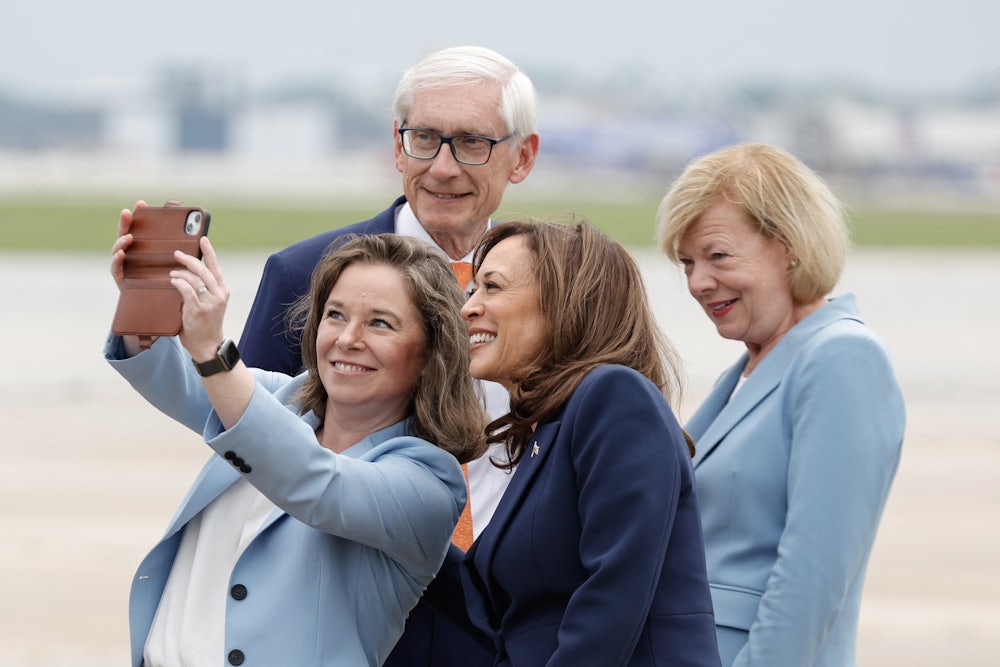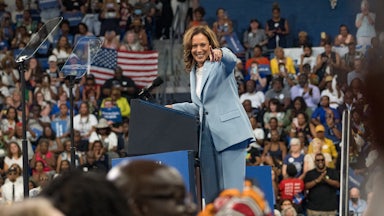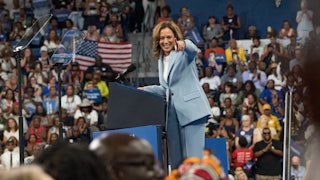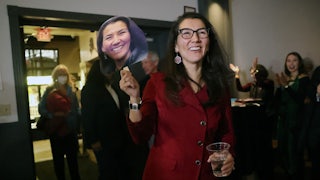The presumed Democratic nominee for president is lagging in the polls in an array of battleground states. Not to GOP nominee Donald Trump—to Democratic Senate and gubernatorial candidates who are popular in their home states and appear well positioned to win this fall even as their constituents tell pollsters they are closely divided on who should be the next president.
Traditionally, downballot candidates anxiously look upward, either hoping for a boost from a popular nominee or carefully separating themselves from a struggling national ticket. But this year the reverse could be true, with more statistically secure Democrats bringing out voters who could put Vice President Kamala Harris over the top.
Call it reverse coattails: Candidates like Senator Bob Casey could give her credibility with unsure Democrats in Pennsylvania, or North Carolina Democratic gubernatorial candidate Josh Stein—running against a GOP foe who makes the Trump-Vance ticket seem feminist—might bring otherwise uninterested Democrats to the polls. In a state like Wisconsin, where Democratic Senator Tammy Baldwin enjoys a healthy polling lead (and where a newly competitive battle for control of the state assembly has energized the Democratic rank and file), a down-ticket-driven turnout spike could decide the state, and with it the election.
“It’s accepted political wisdom that in 2016, Ron Johnson helped Trump get over the top” in Wisconsin, Joe Zepecki, a longtime Democratic operative in the Badger State, told me, referring to the sitting junior senator. “For months, the word from the left was that you could absolutely see Tammy Baldwin drag Joe Biden across the finish line here.” And while Harris has enjoyed a burst of voter enthusiasm—at least in the heady period after her ascension to nominee—similar dynamics could make the difference in what is still expected to be a close election, he said.
State referenda on reproductive rights (on or expected to be on the ballot in battlegrounds Nevada and Arizona, and battleground-adjacent Florida and Colorado) are also poised to increase Democratic turnout, according to a survey by the nonpartisan Kaiser Family Foundation.
Harris does not have the same enthusiasm (or lack of enthusiasm) problem President Joe Biden had before he withdrew. But in what figures to be an excruciatingly tight race—where collecting votes is like “looking under the cushions for coins,” as Christopher Borick, director of the Muhlenberg College Institute of Public Opinion, described it to me—Harris could do with a little help from her downballot friends.
“If I’m at the top of the ticket, I certainly want a deep bench underneath me to help,” Borick said.
The polling numbers are head-scratching, given the country’s political polarization and the drastically different worldviews of the two presidential foes. In Arizona, Harris is five percentage points behind Trump, in a recent Public Opinion Strategies poll, while an Emerson College survey has Democratic Representative Ruben Gallego leading his GOP opponent, Kari Lake, by four percentage points. In Wisconsin, where recent polling has Baldwin leading her Republican opponent by five to 11 percentage points, Harris is neck-and-neck with Trump. In Pennsylvania, where recent polling has Casey ahead by five to 13 percentage points, Harris edges out Trump by just three in the Public Opinion Strategies poll. In North Carolina, where recent surveys show Stein ahead of GOP opponent Mark Robinson by four to six percentage points, Trump leads Harris in polls by similar margins. In Nevada, incumbent Senator Jacky Rosen leads her GOP challenger by two to eight percentage points in recent polls, while Harris and Trump are virtually tied. And in Michigan, where Democratic Senate candidate Elissa Slotkin leads her GOP opponent by five percentage points, the Public Opinion Strategies survey has Harris and Trump even.
True ticket splitters still exist, even in this us-versus-them political era. Hard as it may be to imagine someone walking into a voting booth in Wisconsin and pulling a lever for a liberal lesbian senator and a former president who made it a mission to roll back anti-discrimination regulations protecting LGBTQ people, it does happen. In North Carolina, Tom Jensen, director of Public Policy Polling told me, there are rural voters who can’t stomach Robinson and will vote for Stein even as they cast ballots for Trump.
But ticket-splitting is on the decline. According to an analysis by Statistica, 43 percent of voters split districts for House seats and the presidency in 1984; that fell to 3.7 percent in 2020. There are surely jurisdictions this year where voters will not vote straight party: Montana, for example, might well reelect Democrat Jon Tester for the Senate, but the idea of the state voting for Harris is laughable. In Ohio too, incumbent Senator Sherrod Brown leads his GOP opponent in polls, but the onetime battleground presidential state is no longer considered competitive. But those are outliers and cases where the personal popularity of the incumbent creates an exception (Tim Ryan, who ran a Brown-esque campaign for Senate in Ohio in 2022, lost to J.D. Vance, now the GOP vice presidential nominee).
The abortion-related referenda also promise to boost turnout among Democrats. In the past, the turnout impact of referenda has been sketchy. While ballot initiatives banning same-sex marriage in 11 states were widely credited at the time with helping President George W. Bush win reelection in 2004, academic research has questioned whether they had much of an impact.
But in 2004, same-sex marriage was already illegal in those 11 states, providing less of an incentive for conservative voters to go to the polls on that basis alone. With abortion rights being consistently eroded since the 2022 Dobbs decision, the matter is more present—and potentially more motivating.
In states where abortion referenda are (or may be) on the ballot, 53 percent of Democratic women voters say they are more motivated to vote this year than in previous elections, Kaiser found. In Arizona, six in 10 Democratic female voters said they would be more inclined to vote because of the expected ballot initiative on abortion, compared to 52 percent of independent woman voters and 37 percent of GOP women. In 2022—when Democrats overperformed in a midterm cycle that typically punishes the party that holds the White House—Kaiser found that despite concerns about inflation, more than one-fourth of voters said the Dobbs ruling was the single most important factor in their voting decision. And by a 2-to-1 margin, those voters cast ballots for Democrats.
Harris is enjoying a bit of a honeymoon now—extended in no small part by Trump’s missteps. It’s still likely to settle into a tight race, with newly motivated constituencies for each candidate. She’ll need all the coins she can find in the couch—and they may come from down-ticket candidates.








